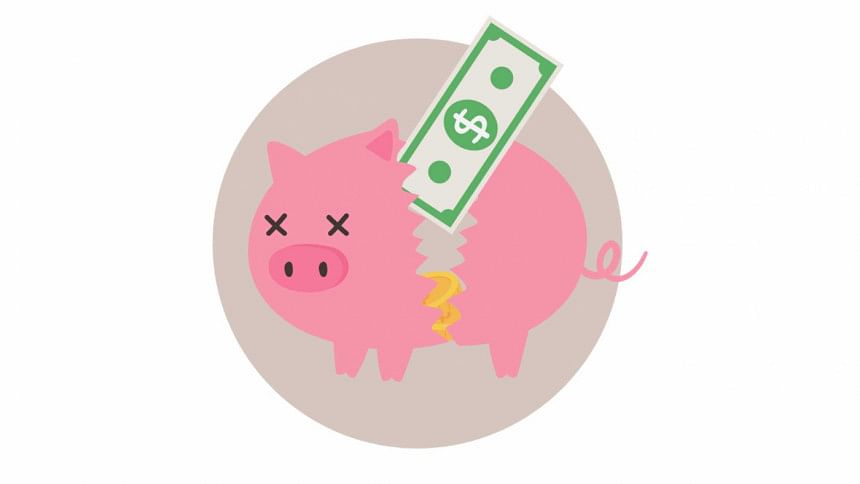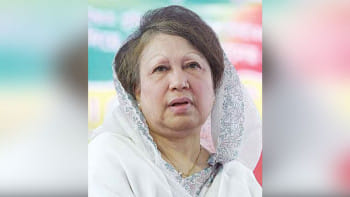How to make the Universal Pension Scheme successful

The Bangladesh government recently announced a move to roll out a pension plan, initially named the Universal Pension Scheme (UPS), during the 2022-23 fiscal year. There are several areas—government contribution, investment portfolio, etc—that need to be sorted out as the responsible government agencies and the pension authority work out the mechanism and institutional and technical infrastructure before the programme is formally launched. The finance minister has provided a few details of the UPS and promised that it will be launched within the next 12 months. My comments are based on the minister's virtual press conference on February 23, where he presented an outline of the scheme.
The finance minister declared that a person would receive Tk 64,776 in pension until the age of 80 if he or she started depositing Tk 1,000 every month from the age of 18 until 60—i.e. for 42 years. If they start depositing money at the age of 30 and continue until 60, they will receive Tk 18,908 in pension every month. It is not clear if the government will match the contribution of an enrolled citizen.
I believe the announcement of UPS is laudable and—one might add—comes not too soon. The ruling party committed to the scheme during the 2008 general elections, and it has been planning to introduce it since FY2017-18. However, it is going to be a challenge for the government and the new agency responsible for running it, both financially and administratively.
There are three financial parameters and two sociological considerations that will affect this programme's success. The financial parameters are: future paths of inflation, rate of return, and the time value of money (TVM). The concepts of inflation and the rate of return on investment are well-known. On the other hand, the TVM is a basic concept that holds that money in the present is worth more than the same sum of money to be received in the future. If you lend Tk 1,000 today, and the borrower gives you back the same amount in 10 years' time, would you be interested? Is the value of Tk 1,000 today the same as Tk 1,000 at a distant future date even if there is no uncertainty, inflation or alternative investment opportunities? The answer is: No.
The two sociological considerations are: "trust in government" and "savings culture." If the public is wary of its competency, honesty or corruption, they might be hesitant to hand over their savings to the government. Similarly, for a family that is currently not putting away any money for the future, an opportunity to save in a pension fund may provide an incentive to save.
In the following (hypothetical) example, I use some basic mathematics and very simple assumptions to illustrate the principle. I arrived at the conclusion that the incentive for a prospective participant in the scheme is less than enticing, given that there are many other alternatives available in Bangladesh.
Scenario 1: No inflation and zero rate of return (no investment outlet)
If an 18-year-old worker joins the programme from day one, say in January 2023, he or she will contribute Tk 1,000 per month. The total over the next 42 years will amount to Tk 504,000 if the money is sitting idle in the government's coffers. According to the finance minister's figures, when this worker turns 60 in January 2065, he or she receives Tk 64,776 in monthly pension and keeps on receiving this fixed amount over the next 20 years. In total, he or she will have received Tk 1,55,46,240 till January 2085.
If we assume that inflation is zero percent over the next 62 years—i.e. starting from 2023 till the end of 2084—and the government's pension fund is the only investment outlet available in Bangladesh, that's not a bad deal for the pensioner. However, my arithmetic is based on two major assumptions: the rate of returns on investment and the rate of inflation are both zero. Let's relax these two pivotal conditions and introduce financial intermediaries and banks, plus inflation.
Scenario 2: No inflation and 6 percent rate of return
First, let's keep the inflation rate frozen at zero, but consider different investment avenues and different rates of return. If the money is regularly put into a savings account or in a fixed deposit which generates a 10 percent annual rate of return, at the end of 42 years, the total amount of savings balloons to Tk 85,67,791.08, thanks to the power of compounding. But this sum is less than the Tk 1,55,46,240, which is the present worth of UPS.
Alternatively, at a 12 percent rate of return, my monthly investment of Tk 1,000 turns to Tk 1,68,75,746.13, which is greater than the present pension value.
Thus, the implicit rate of return offered by the UPS is greater than the rate any savings account in Bangladesh would offer, which is six percent, but less than the 12 percent return for some savings certificates. The judgement here is based on a projected inflation rate of zero.
Scenario 3: Inflation at 5 percent, real rate of return at 6 percent
Now let's bring in inflation. For illustrative purposes, if inflation is five percent, then the real value of the UPS is much less after discounting for inflation. The real rate is calculated by subtracting the rate of inflation from the nominal interest rate. In this case, the real rate of return is six percent.
Still worse, if inflation continues at the same rate for 42 years of saving, and another 20 years after that, the discounted value of your total pension is even less. Actually, the purchasing power of Tk 64,776 in 2065 is a fraction of the nominal value if you factor in a five percent rate of inflation, and it keeps on declining further as you approach 80 years of age.
I, therefore, advise the pension authority to keep an eye on the financial and sociological factors in view as they design the new UPS. They will need to build trust among the public to ensure the success of this important programme.
Dr Abdullah Shibli is an economist and works for Change Healthcare, Inc., an information technology company. He also serves as a senior research fellow at the US-based International Sustainable Development Institute (ISDI).

 For all latest news, follow The Daily Star's Google News channel.
For all latest news, follow The Daily Star's Google News channel. 








Comments